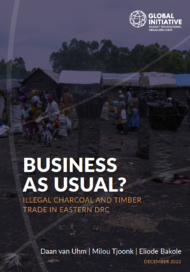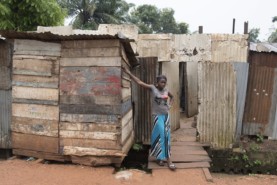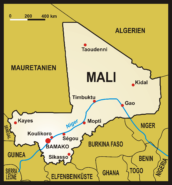Posted on 06 Dec 2022
The eastern region of the Democratic Republic of Congo (DRC) bordering Rwanda and Uganda is one of the richest in the world in terms of biodiversity and natural resources – from coltan and cobalt, to gold and tropical timber – but one of the poorest in terms of wealth, safety and peace.
Since the colonization of the Congo (as it was formerly known) in the 19th century, power struggles over natural resources have played a significant role in decades of oppression, war, widespread violence and displacement of people. Such conflict has negatively affected populations and the natural environment. In particular, the rapid disappearance of the Congo rainforest is of serious concern. Deforestation rates in the DRC have almost doubled in the last decade,4 with the DRC reporting a loss of over 1 million hectares annually between 2010 and 2020, which is the third highest rate of forest denudation in the world (behind China and Brazil). Deforestation has irreversible effects on ecosystems, impacting human and non-human inhabitants as forests generate water supplies and biodiversity, and mitigate climate change.
One source of deforestation is the illicit trade in timber and charcoal, which entails illegal harvesting of trees and production of charcoal outside concessions or inside nature reserves, as well as illegal trade involving tax avoidance or forged certificates. Given the high levels of violence and corruption in the region and the presence of armed groups, due diligence along the trade chain is often limited or even impossible. Consequently, much of the logging activity is presumed to be illegal.
The illicit timber and charcoal trade are lucrative businesses in the region and have thus attracted a variety of actors, including violent armed groups, underpaid military personal, corrupt politicians, local traders and poor civilians. The placement of militarized park rangers inside the borders of national parks to defend the natural environment contributes to the complex web of power dynamics between legal and illegal actors involved in illegal trade. For instance, illegal entrepreneurs may initially engage in a criminal economy, but in so doing they enter a theatre of environmental conflict where they either add to or change the underlying dynamics of the conflict. Additionally, the distinction between legal and illegal activities has become so blurred as to be almost non-existent. Militia groups are socio-economically and politically embedded in the local communities, providing access to natural resources, generating economic income, and offering protection and social prestige among the inhabitants of this region. At the same time, armed groups control secure systems of extortion and patronage along the charcoal and timber trades, increasing their status and power.
As a major hub of illicit trade, the eastern DRC region is therefore a useful case study for understanding the complex relationship between crime, conflict and the environment.




